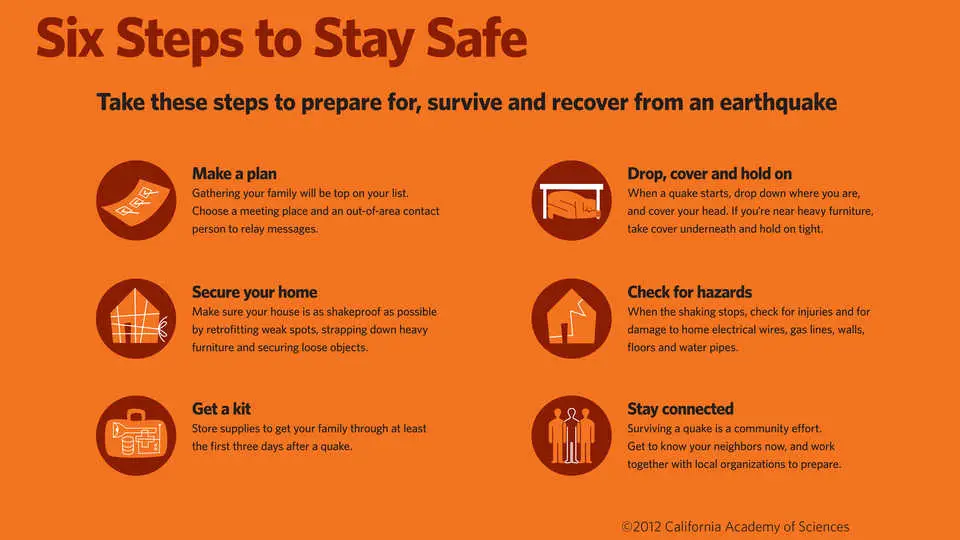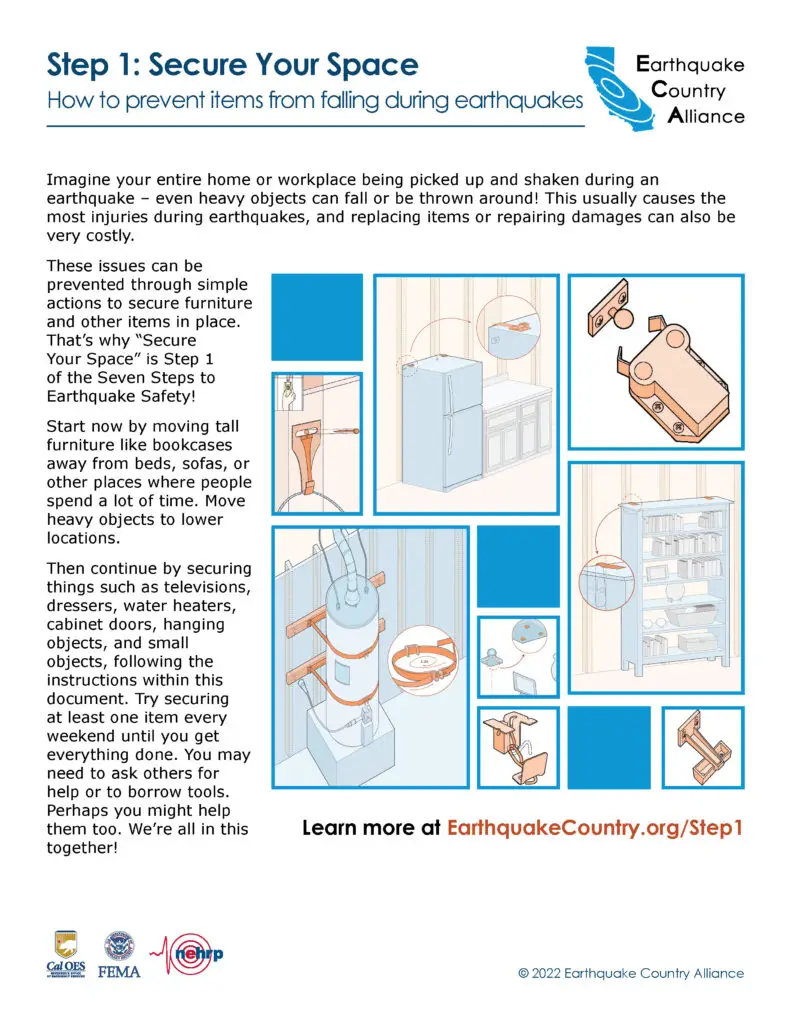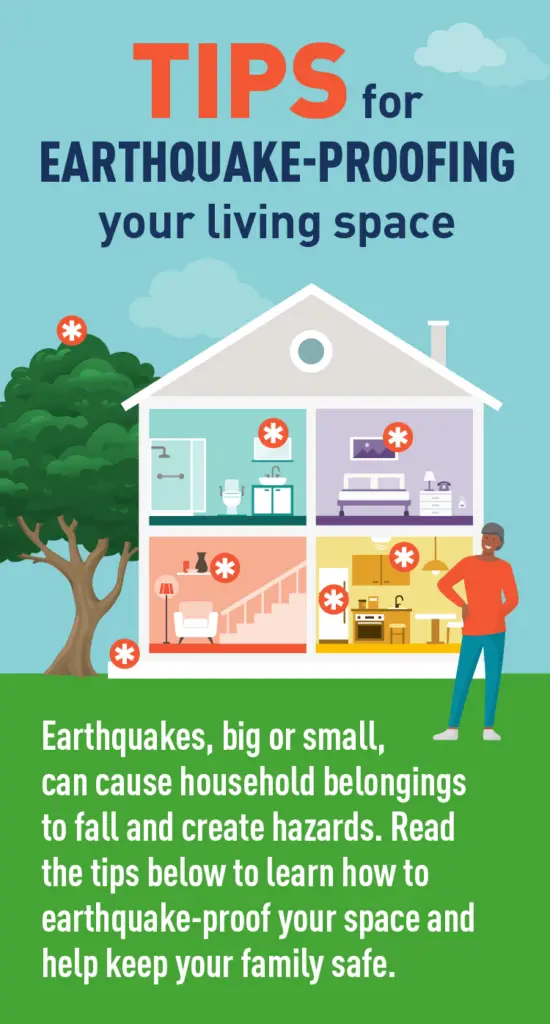Are You Prepared for the Next Earthquake?
Hey there! You may not realize it, but earthquakes can strike at any time and without warning. It’s essential to be prepared in case of a seismic event. In this article, we are going to discuss how you can earthquake-proof your home and ensure you have the necessary supplies to keep you and your loved ones safe during such an emergency.

Understanding Earthquakes
Before we dive into earthquake-proofing your home, let’s first understand what causes earthquakes. Earthquakes occur when there is a sudden release of energy in the Earth’s crust, resulting in seismic waves. These waves can cause the ground to shake, leading to damage to buildings, roads, and other structures.
Tectonic Plates
The Earth’s crust is made up of several large pieces called tectonic plates. These plates are constantly moving, which can result in earthquakes when they shift against each other. The boundaries of these plates, known as fault lines, are where most earthquakes occur.
Earthquake-Proofing Your Home
Now that you have a basic understanding of earthquakes, let’s discuss how you can earthquake-proof your home to minimize damage and keep your family safe.
Secure Heavy Furniture
One of the first steps in earthquake-proofing your home is to secure heavy furniture such as bookshelves, cabinets, and appliances. Use brackets, straps, or anchors to attach these items to the wall or floor to prevent them from tipping over during an earthquake.
Install Latches on Cabinets
Install latches on cabinets to prevent them from opening and spilling their contents during an earthquake. This will not only help prevent injuries but also reduce the risk of damage to the items inside the cabinets.
Anchor Water Heater and Gas Appliances
Water heaters and gas appliances are at risk of rupturing during an earthquake, which can lead to gas leaks and fires. Make sure to anchor these appliances securely to the wall or floor and have flexible gas lines installed to prevent them from breaking.
Reinforce Your Chimney
Chimneys are particularly vulnerable during earthquakes, as they can collapse and cause significant damage. Have a professional inspect your chimney and make any necessary repairs or reinforcements to ensure it can withstand seismic activity.

Creating an Emergency Supply Kit
In addition to earthquake-proofing your home, it’s essential to have an emergency supply kit on hand to help you and your family survive in the event of a seismic event. Here are some items you should include in your kit:
Water and Non-Perishable Food
Be sure to have an ample supply of water and non-perishable food in your emergency kit to sustain you and your family for at least three days. Store these items in airtight containers and check expiration dates regularly.
First Aid Kit
A well-stocked first aid kit is essential in any emergency situation. Make sure your kit includes bandages, antiseptic wipes, pain relievers, and any necessary prescription medications for you and your family members.
Flashlights and Batteries
Power outages are common during earthquakes, so it’s essential to have flashlights and extra batteries on hand. Avoid using candles, as they pose a fire hazard in the event of gas leaks.

Developing an Emergency Plan
Having an emergency plan in place can help you and your family stay safe and organized during a seismic event. Here are some steps you can take to develop an emergency plan:
Identify Safe Zones in Your Home
Identify safe zones in your home where you and your family can take shelter during an earthquake. These areas should be away from windows, heavy furniture, and appliances that could topple over.
Establish Communication Protocols
Establish communication protocols with your family members so everyone knows how to get in touch during an emergency. Designate a meeting place outside your home where everyone can gather after the earthquake.
Practice Evacuation Drills
Practice evacuation drills with your family to ensure everyone knows how to exit the home safely in the event of a seismic event. Make sure to have a designated meeting place outside the house where everyone can gather.

Retrofitting Your Home for Earthquakes
If you live in an area prone to earthquakes, you may want to consider retrofitting your home to make it more resistant to seismic activity. Here are some common retrofitting techniques:
Strengthening Foundation
One of the most effective ways to retrofit your home is to strengthen its foundation. This can involve installing steel beams, concrete footings, or other materials to help absorb seismic waves and prevent damage.
Bracing Walls
Bracing walls can help prevent them from collapsing during an earthquake. This can involve adding steel braces or plywood sheathing to reinforce the existing walls and make them more resistant to seismic activity.
Securing Roof
Securing your roof is crucial to prevent it from collapsing during an earthquake. Consider adding metal connectors, bracing, or other reinforcements to ensure your roof can withstand seismic waves.

Conclusion
By earthquake-proofing your home, creating an emergency supply kit, developing an emergency plan, and retrofitting your home, you can significantly reduce the risk of damage and injury during a seismic event. Remember to stay calm, stay prepared, and stay safe!
